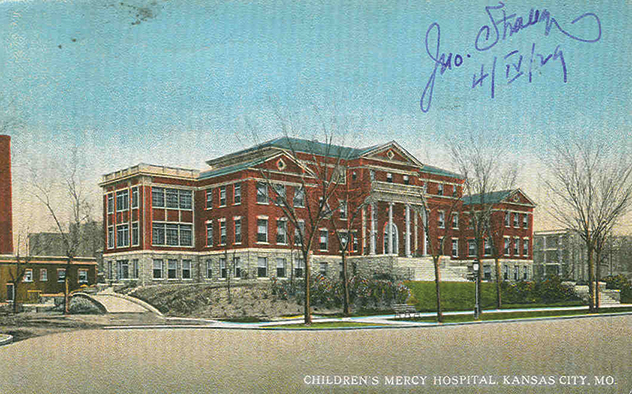 Michael Bushnell
Michael Bushnell
Northeast News
The laying of the Cornerstone of Mercy Hospital at 1710 Independence Boulevard in October of 1916 was a ceremony full of pomp and circumstance, drawing powerful and influential dignitaries from across the city. However, one piece of history that has gone unmentioned is that a dozen or so Streetcar Motormen from the Northeast Line were invited to participate in the ceremony. As profiled in the Railwayan Magazine, the monthly newsletter for the Kansas City Public Service Company in November of 1916 and re-visited in November of 1946 as part of a retrospective, the column notes which Motormen had the honor of being invited and the longest serving Motorman who was asked to give a brief address on how the late Dr. Alice Graham would board the #30 streetcar at St. John and Clinton Place and ride to the City Market with an empty basket under her arm, then return via the streetcar to the hospital with the basket full of provisions. The invited Motormen were G.K. Means, S. R. Scott, James Thomas, and Smith Ford along with Conducters James Jones, T. B. Sullivan, C. F. Davidson and Charles Dunaway, all working out of the 9th and Brighton Trolley Barn and invited personally by Mercy Hospital co-founder Dr. Katherine Richardson, to be present at the laying of the cornerstone.
The passage from the October 3rd, 1916 Kansas City Star reads: “Concerning the laying of the cornerstone of Mercy Hospital, a trainman demonstrates that true eloquence is sometimes found on the platform of a trolley car. Looking back over 20 years, patrons of the Northeast line remember a little gray-haired woman who, morning and evening rode that line, going down to the market of a morning, an empty basket under her arm, and returning at evening with the basket filled. She was Dr. Alice Graham.”
C. F. Davidson, the oldest Motorman on the line remembers those days, and in a 10-minute talk he described the work of the little gray-haired woman down through the years until her death. The other Trainmen all stood around the platform with their heads bared as he spoke.
So impressed was hospital Trustee and Rabbi of Congregation B’nai Jedudah, Harry Mayer, with Davidson’s address he noted to fellow Trustee and Attorney Reginald Brewster that Davidson’s talk sounded much like Lincoln’s address at Gettysburg. Brewster heartily agreed and when it was his time to speak, recognized Robinson as an excellent orator and the attending crowd burst into applause.
The above noted passage is not mentioned in any of the history previously written for the hospital and only occupies about six column inches in the November 1946 Railwayan Magazine. Over twenty years of Railwayans were rescued from the landfill by The Northeast News in 2008. Had we not intervened, this small but important piece of Trainmen and Hospital history would be lost forever.



















